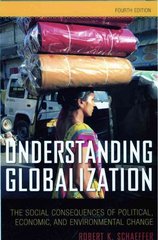Question
Question 1. We postulate the utility function u! :L : u!(x) = a x - [1/2] x B x , (1.1) where a = (a1,...,
Question 1.
We postulate the utility function
u! :L : u!(x) = a x - [1/2] x B x , (1.1)
where a = (a1,..., aL ) ++
L , and B is an LL symmetric, positive definite matrix.
1.1. Compute the gradient vector u!(x).
1.2. Compute the Hessian matrix D2
u!(x).
1.3. Is the preference relation represented by u! continuous? Homothetic? Quasilinear? No need to
justify your answers.
1.4. Is the preference relation represented by u! convex? Strictly convex? Locally nonsatiated?
Explain your answers.
1.5. In order to develop your intuition, graphically represent the indifference map for L = 2, for the
special case where a1 = a2 a and B = b c
c b
. Separately consider the cases c = 0 and c > 0.
Be as precise as possible.
1.6. You can assume that, for (p, w) >> 0, a solution to the UMAX[p, w] problem exists and is
unique. Without attempting at this point to explicitly solve the UMAX[p, w], show that for w
above a certain level, that you should made explicit, demand is insensitive to increases in wealth,
2
whereas for values of w below this level Walrasian demand is affine in wealth. (Hint: For the
second part, use the Implicit Function Theorem.)
1.7. We now consider a society with I consumers, each endowed with the preference relation
represented by u! in (1.1). We denote by P := ++
L+I
the domain of prices and individual wealth
vectors ( p;w
1
,...,w
I
). Is there a subset of P for which a positive representative consumer exists?
Explain.
Consider an economy with 2 factors of production, labor and capital, and 2 produced consumption goods, food (good1) and electricity (good 2). The production functions for goods 1 and 2
are
y1 =
p
L1K1, y2 = (min{L2, K2})
2
that is, the production of good 2 exhibits increasing returns to scale. There is a representative agent
for the economy who consumes the produced goods, has no disutility for labor, has preferences
represented by the utility function u(x1, x2) =
x1x2, and is endowed with one unit of labor and
one unit of capital.
(a) Find the Pareto optimal allocation of this economy.
(b) The second Theorem of Welfare Economics does not apply to this economy since the production set of firm 2 exhibits increasing returns to scale. An alternative to a Competitive
Equilibrium for an economy in which some firms have increasing returns to scale is a Marginal
Cost Pricing equilibrium. All goods have market prices that consumers and firms take as
given. The behavior of consumers and firms with convex production sets are the same as in
a competitive equilibrium. The only difference is that the firms with increasing returns to
scale are regulated: they are required to minimize their production costs given the prices of
the factor of production, and to produce a quantity of output such that the marginal cost of
the last unit produced is equal to the price of this output on the market. The regulator uses
taxes to finance the deficit of the regulated firms. In equilibrium the prices of the goods must
be such that all markets clear. Show that in a Robinson Crusoe economy (one agent, two
goods, one technology) in which the production set exhibits increasing returns to scale but
the preferences are convex, every Pareto optimal allocation can be obtained as a Marginal
Cost Pricing equilibrium (draw an example with a unique Pareto optimal allocation).
(c) Coming back to the economy studied in (a), the planner who regulates firm 2 taxes capital
in order to finance the subsidy to firm 2. Write the definition of a Marginal Cost Pricing
equilibrium for this economy.
(a) (i) Define the term Marginal Revenue Productivity (MRP) of a factor of production.
(ii) State and explain two factors that can influence MRP.
(iii) Outline two difficulties that may arise in measuring MRP. (25)
(b) 'Capital Investment has been an important driver of economic advancement in Ireland
over the past ten years, providing the capacity and scope for growth'.
(The National Recovery Plan 2011 - 2014)
(i) State and explain three reasons why investment is important for the Irish economy.
(ii) Describe three factors that currently influence the level of investment in the Irish
economy. (30)
(c)
Advise the Minister for Transport on two possible economic advantages and two possible
economic disadvantages of investing in public transport, rather than investing in the construction
of new roads.
Step by Step Solution
There are 3 Steps involved in it
Step: 1

Get Instant Access to Expert-Tailored Solutions
See step-by-step solutions with expert insights and AI powered tools for academic success
Step: 2

Step: 3

Ace Your Homework with AI
Get the answers you need in no time with our AI-driven, step-by-step assistance
Get Started


